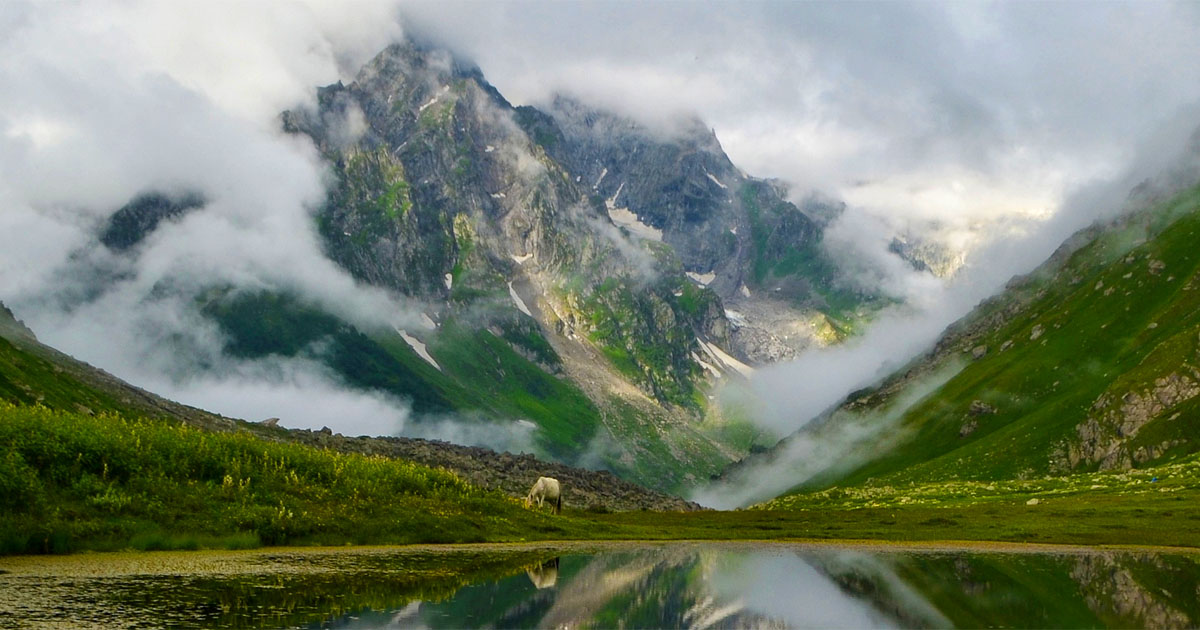
Pin Bhaba Pass Trek
TREK DIFFICULTY
Difficult
TREK DURATION
8 Days
HIGHEST ALTITUDE
16,108 Feet
GROUP SIZE
12
TREK DISTANCE
52 Km
BASECAMP
Himachal Pradesh
BEST TIME
July to August
PICKUP POINT
Himachal Pradesh
Pin Bhaba Pass Trek Overview
Pin Bhaba Pass Trek, is a high altitude mountain pass. It crosses over from Bhaba valley in Kinnaur Himachal to the magnificent Pin valley in Spiti. Starting from Kafnu, which boasts Hydel Power projects, the trail quickly leads into remote forest and from the very first day we encounter significant landscape change, which is a feature that encompasses every trekking day during the journey. The trek is challenging, with Pin Bhaba Pass height being 16,108 feet (4,910 meters), but it is worth the effort. The trek concludes at Mud village, which is where the mighty Pin Parvati Pass trek concludes as well. Add in a few more days to explore around the Spiti valley, such as Kaza, Hikkim, Key etc & it is one remarkable trip, a tale for a lifetime.

The Pin Bhaba Pass Trek is one of the most popular and desired crossover treks in India which is in every trekker’s bucket list. It's not just a trek but a once-in-a-lifetime experience which takes you through an adventurous and unforgettable journey through the various forms of nature. The Pin Bhaba pass trek has phenomenal landscape that changes dramatically throughout the trek. We drive eastward from Shimla across the lesser Himalayas and follow river Sutlej all the way to Wangtu, where the Bhaba river confluences with Sutlej. As we start making our way in the northern direction we start our approach to the Great Himalayan range. The allocation of "great" to a Himalayan range is attributed to its massive altitude. This range averages at altitude of 5000-6000 meters. Parang La, Baralacha La and Pin Parvati pass are some other passes that are part of the Great Himalayan range in this region. As we reach the Pin Bhaba pass and crossover to the other side, we enter the Zanskar Range. An enormous change occurs in landscape as we cross from these high passes from south to the north. The green and rugged terrain of the low and high Himalayas give way to the rocky plateaus of the zones of Spiti, Ladakh and the Trans-Himalayas. The landscape change is attributed to this change in altitudes and mountain ranges that happen throughout the trek.
Day 1: Drive from Shimla to Kafnu(200 km Drive )
Day 2: Trek from Kafnu to Mulling(3,250m)
Day 3: Trek from Mulling(3,250m) to Kara(3,550m)
Day 4: Trek form Kara(3,550m) to Phustirang(4,100m)
Day 5: Acclimatization day at Phushtirang(4,100m)
Day 6: Trek from Phustirang(4,100m) to Pin Bhaba Pass(4,915m) & descend to Baldar(3,900m)
Day 7: Trek from Baldar(3,900m) to Mudh(3,810m) & Drive to Kaza(3,650m)
Day 8: Drive from Kaza to Manali(200km Drive)
Buffer day: It is advised to keep a buffer day for this trek in case of bad weather or any other unforeseen situation. If the buffer day is used, then you will need to pay some amount for the extra day used.
In Himalaya Shelter, we provide you with the option to customize your trekking experience. Whether you're a solo traveler, a group of friends, or a family, you can opt for our personalized tailor-made trekking program. This customized trek will be exclusively designed for you, taking into account your specific requirements for transportation, accommodation, meals, and any other premium facilities you may need during the trek. No other participants will be added to your group. Choosing a customized trek will enable you to fully enjoy the trek with your loved ones. Click here to learn what a Customized Trekking program looks like.
-
Kafnu (2,400 m):
Kafnu is a scenic village in Himachal Pradesh that is used as a basecamp for the Pin Bhaba Pass Trek. It's a popular tourist spot and known for its apple orchards, dense forest and green meadows. Kafnu is also famous for the Karcham Wangtoo Hydroelectric Project which is the first underground hydroelectric power station in India. Trekking in Pin Bhaba Pass starts from here after a long drive from Shimla.
-
Mulling (3,250 m):
Mulling village is located in Bhaba Valley, Kinnaur. It's a popular halt or destination of Pin Bhaba Pass Trek. Mulling is known for its beautiful meadows, pine forest, wooden bridges and fast-flowing streams. It's a perfect place to relax and enjoy the surrounding nature.
-
Kara (3,550 m):
Kara is another beautiful campsite on Pin Bhaba Pass Trek. Trekkers camp here for the night after ascending from Mulling. Kara village is best known for shepherds and their livestock grazing; you can find goats, sheep and horses grazing here. Green meadows, wild flowers, flowing river and chirping Himalayan birds make it a vibrant and jubilant place.
-
Phustirang (4,100 m):
Located in Spiti Valley, Phustirang is known for its color-changing mountains. From brown to green to purple to blue to snowy, mountains show the different colours while passing through them. Phustirang is also known for its river delta which provides a serene and visually appealing campsite.
-
Pin Bhaba Pass (4,915 m):
The Pin Bhaba Pass is the destination where you witness the dramatic landscape changes. It offers you a unique experience of viewing the lush green Bhaba Valley in Kinnaur and the barren Pin Valley of Spiti merging into each other. From here, you can get a 360° view of the Himalayas' towering peaks like Hansbeshan, Tari Khango and Pin Bhaba Peak.
-
Mudh (3,750 m):
Mudh is a quaint and charming village located in Pin Valley. It's the last campsite of Pin Bhaba Pass Trek. Here you can find barley fields flowing with the wind. All houses of Mudh are whitewashed and the windows are facing one direction. It seems like the whole village is immersed in the same colour, same culture, same vibe and frozen in time.
To start your journey of trekking in Himachal Pradesh, first Reach Kafnu (Kinnaur district Himachal Pradesh). Kafnu serves as a basecamp for Pin Bhabha Pass Trek.
Reaching Kafnu:
- By Air: The nearest airport is Shimla Airport in Jubbarhatti (around 22 km to Shimla). Kafnu is around 200 km from Shimla Airport. You can also reach via Chandigarh Airport which is around 330 km away from Kafnu.
- By Train: Kalka Railway Station is the closest to Kafnu (approx 300 km).
- By Road: Roads are well connected to Kafnu from Shimla or Chandigarh. You can reach via cab/bus to Kafnu. Distance is around 220 km (7-8 hours) and can take longer due to mountainous roads.
From Returning, Mudh (Spiti side) is the last campsite of Pin Bhaba Pass Trek
You can drive to Kaza from Mudh which is around 50 km from Mudh. For returning you can either take a public bus or book a private cab or shared taxi, then you can head to Manali via Kunzum Pass.
From Manali, you can choose regular buses or cabs to Chandigarh or Delhi
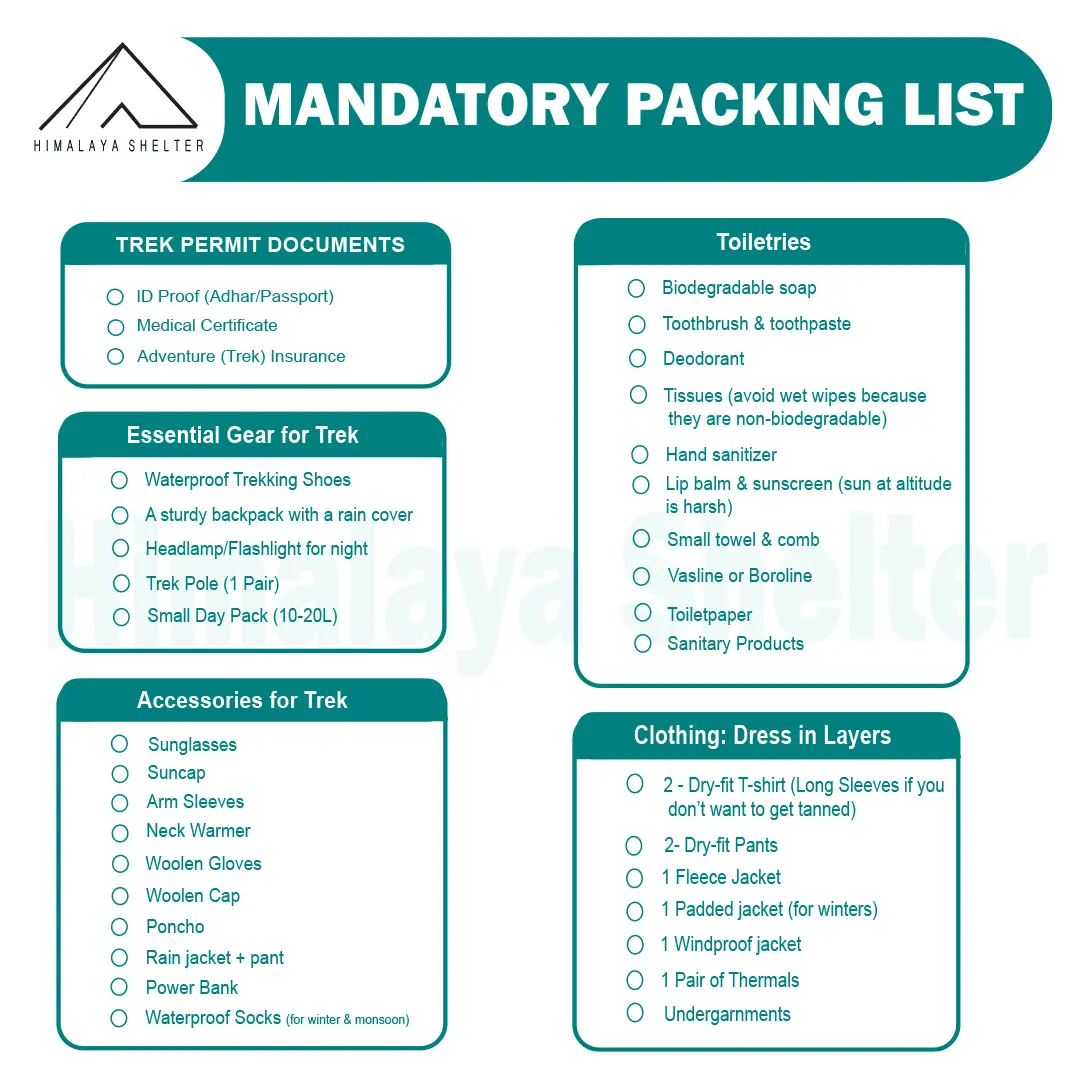
Notice: All trekkers are strictly advised not to carry unnecessary plastic items such as disposable bottles, single-use cutlery, polythene bags, and food wrappers during the trek. We encourage the use of reusable bottles, tiffin boxes, and cloth bags to minimise waste and protect the fragile Himalayan ecosystem. Your cooperation is essential in ensuring a clean and sustainable trekking experience
Physical Fitness Preparation for Trek:
To overcome the difficulty level of Bali pass trekking, it requires strong cardiovascular endurance, muscular strength, and overall physical fitness. Incorporate these exercises into your routine to increase strength, stability, and stamina, which will help you tackle difficult terrain sections of the trail at high altitudes.
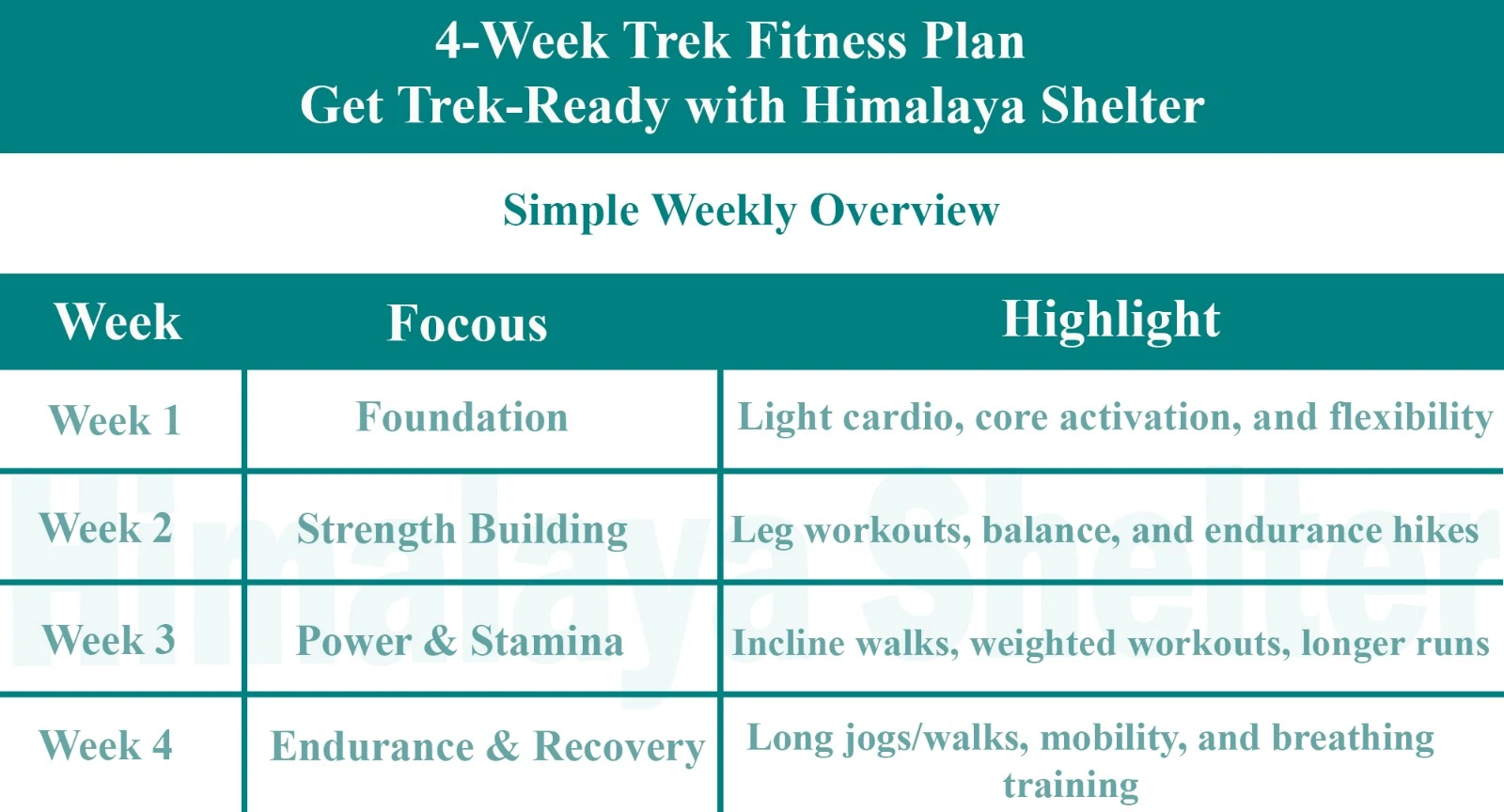
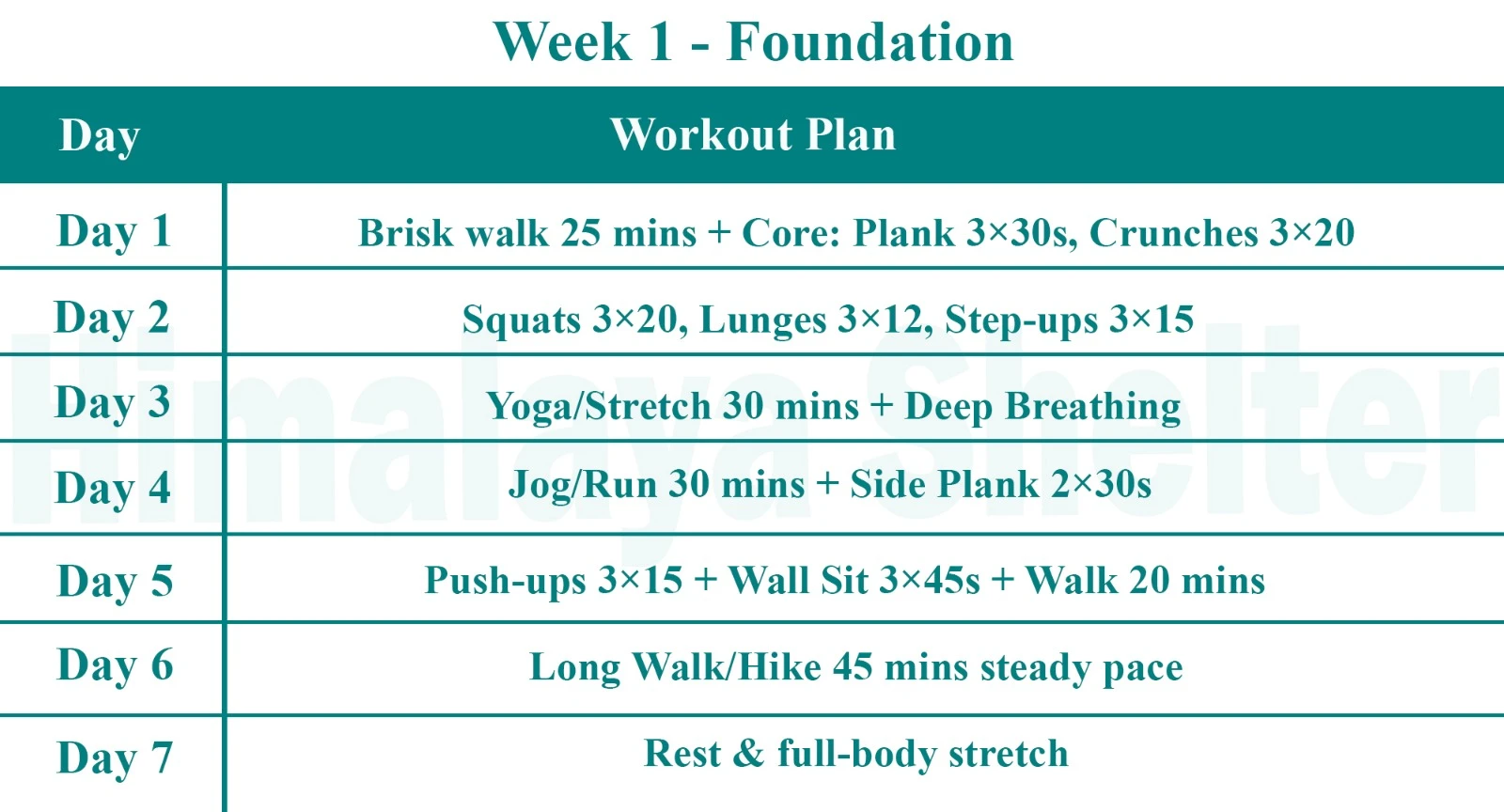
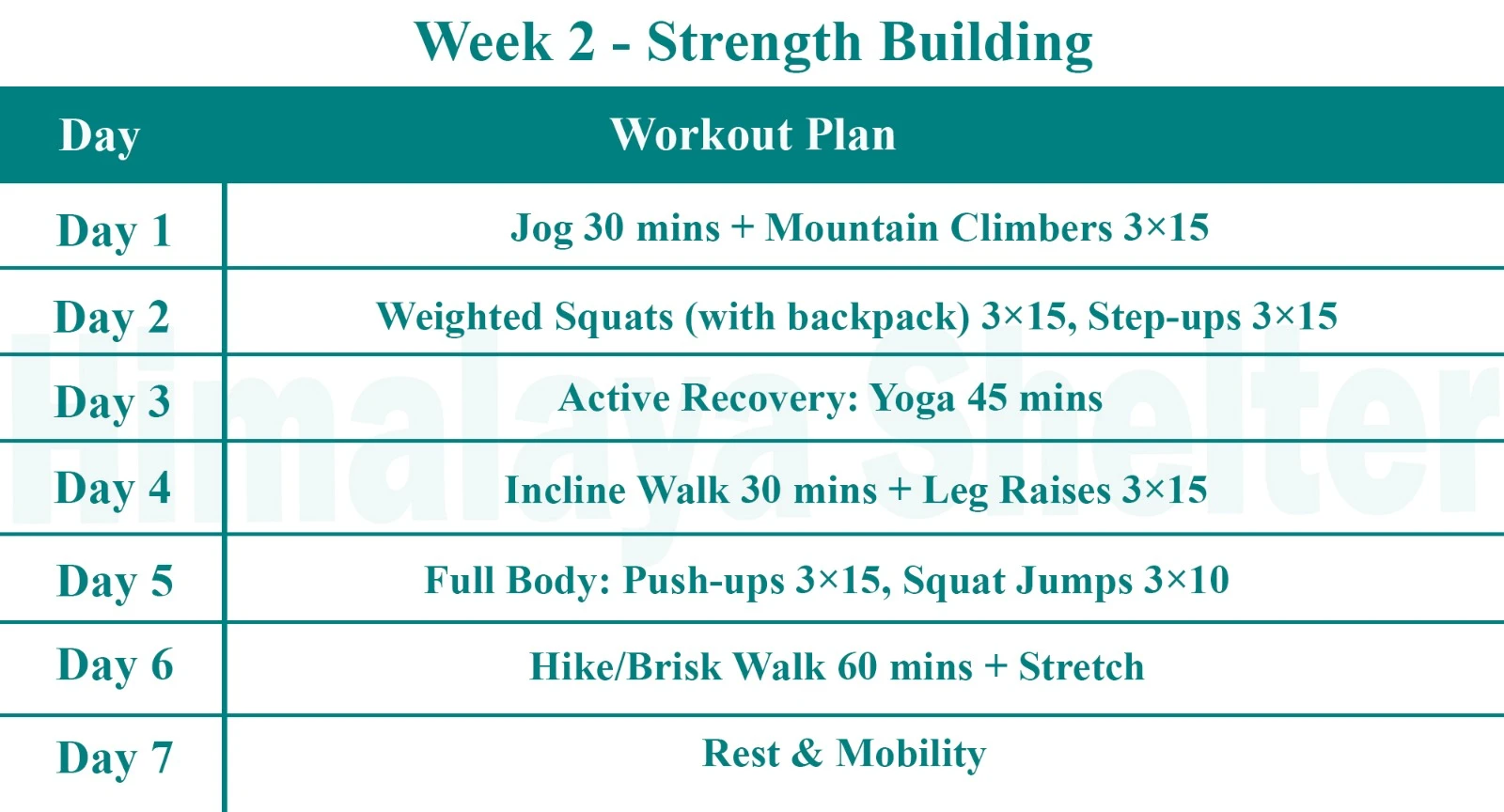
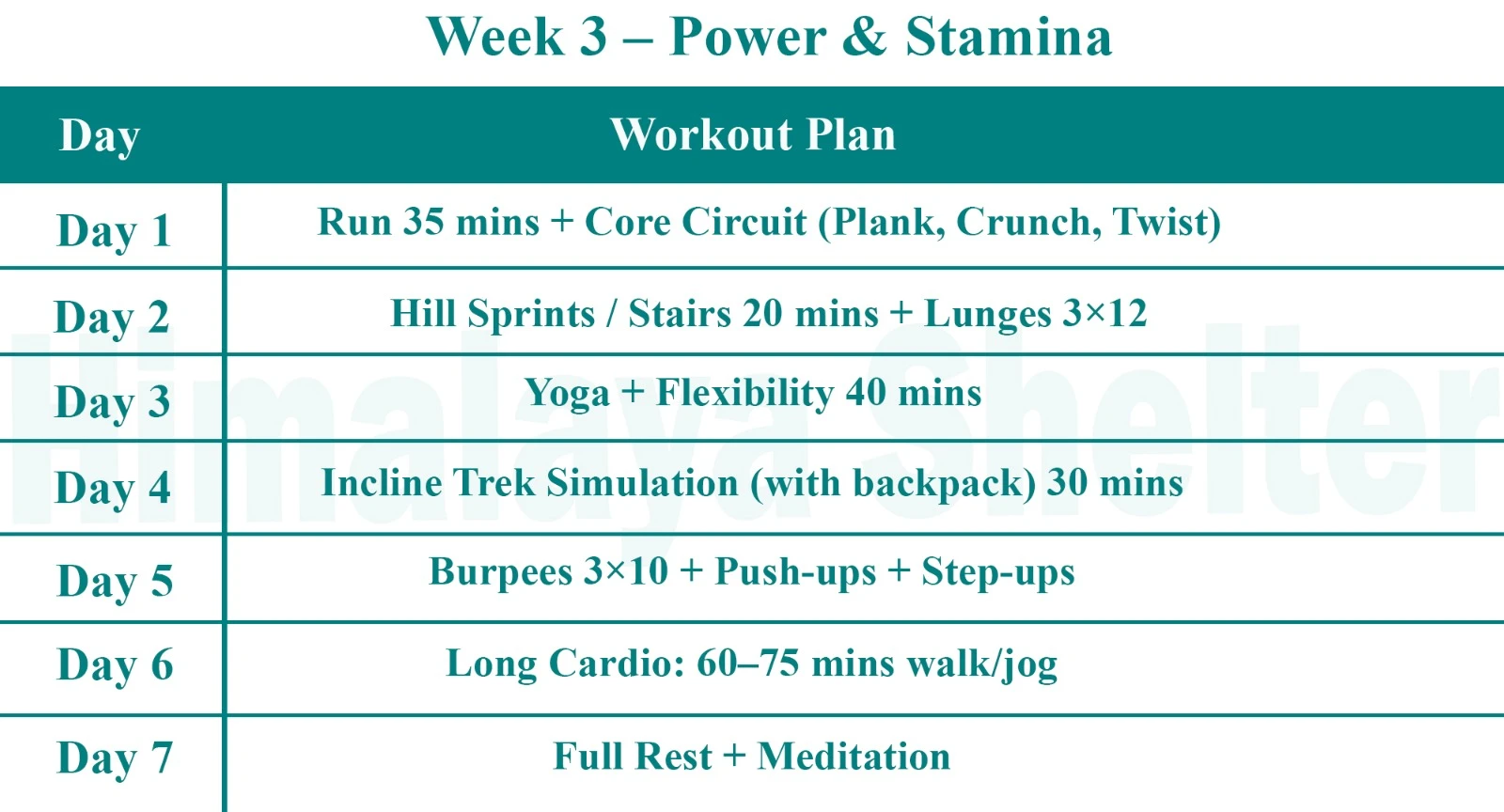
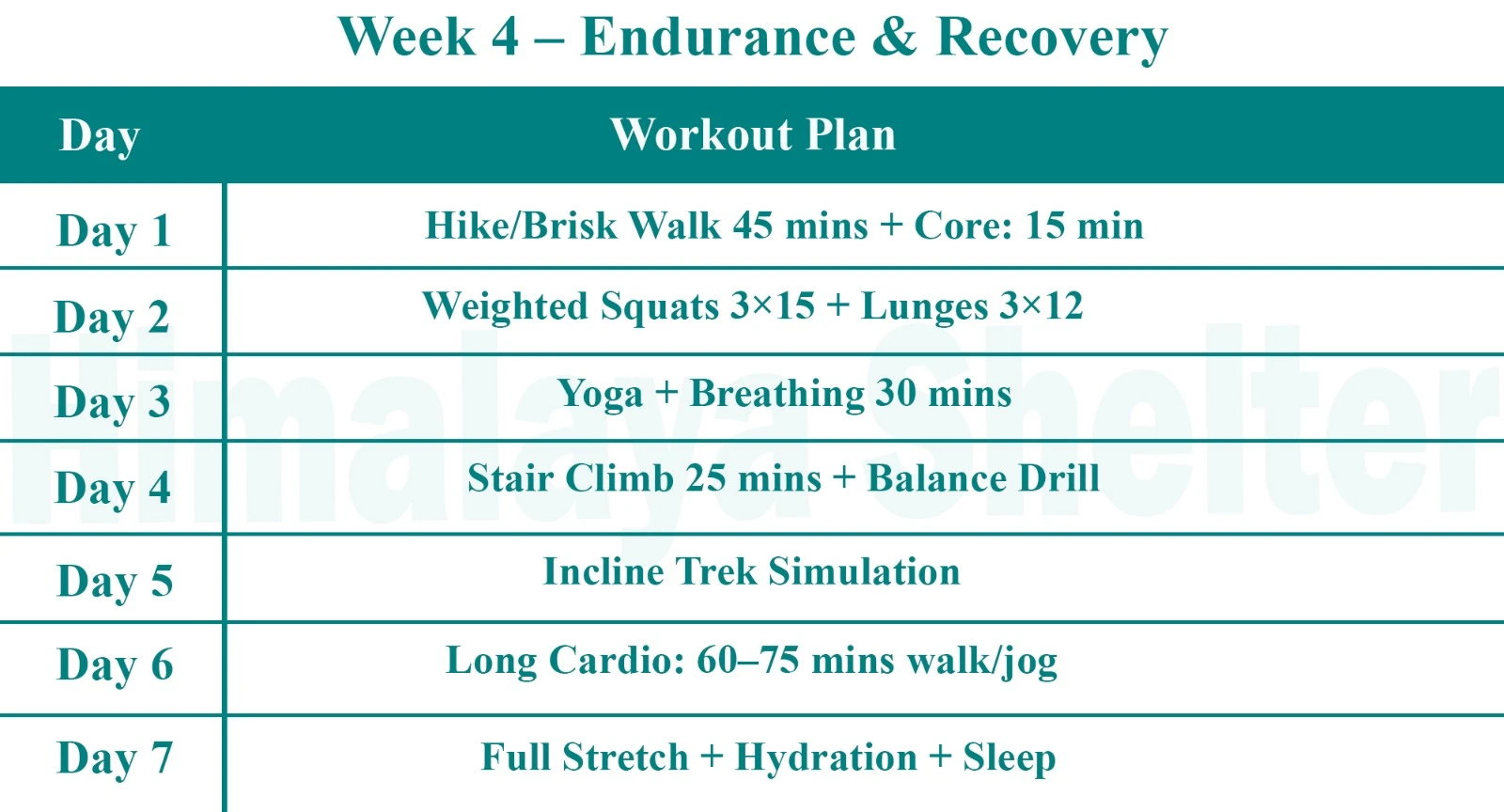
Trekking in Pin Bhabha is considered a moderate to difficult level.
- High Altitude: The elevation of the pass is approx 4,915 m, which requires proper acclimatization.
- Tough & Remote Terrain: The terrain of the trek is full of variety. It includes remote areas, rocky ridges, river crossings and glacial terrain.
- Long Duration & Walking Hours: Pin Bhaba Pass Trek takes 7-9 days to complete. The whole trekking includes daily 6-9 hours walking hours and night stays.
- AMS Risk: Trekkers usually feel Acute Mountain Sickness (AMS) here due to rapid altitude gain and loss. Also, the oxygen level at the pass is limited.
- Unpredictable Weather: Sudden snowfalls and heavy rain make this pass challenging for the trekkers.
The Pin Bhaba Pass Trek is best suitable for the trekkers who have prior experience of trekking in Himachal Pradesh. Beginners should avoid this trek or get the proper training and be physically fit if they wish to.
Read more about "how to prepare for your trek?".
The perfect time to do the Pin Bhaba Pass Trek is from mid-July to mid-September as this time snow starts melting and makes the pass accessible. During this time the weather and temperature are clear and fine. Pin Bhaba is one of those treks in Himachal Pradesh which can be done even in the monsoon. But trekkers must be well-prepared for sudden rainfall and strong winds.
As the Pin Bhaba Pass Trek is known for its transition of nature, you can feel the warmth of the Sun in Kinnaur while the cold ripping winds in Spiti Valley. Waterproof clothes and flexible planning are essential.
For those passionate about trekking in Himachal Pradesh, the Pin Bhaba Pass Trek is one of the best crossover treks in India. Crossover treks are those treks, you start from a different place and end them at a completely different place. It includes crossing different nature landscapes and sometimes different state lines also.
Trekking in Pin Bhaba Pass starts from Kafnu village in the Kinnaur Valley of Himachal Pradesh and it concludes in Mudh village in the Pin Valley of Spiti. From Kafnu to Mudh, there's an amazing transition of nature which can rarely be seen anywhere. People go different places to view different forms of nature like green meadows, flower valleys, snowy mountains, rusty rocks, tranquil streams, swift rivers, barren lands, cold desert, cultural villages, grazing animals – but here in Pin Bhaba Trek, you can experience them all in once. Plus, the golden sunrise and starring night sky are like your favourite ice cream after a delicious meal.
Trekking in Pin Bhaba Pass offers such a dramatic shift of nature that at every halt, when you pitch your tent, you're introduced to a different landscape. Whether you're a nature lover, spiritual seeker or adventurous daredevil, the Pin Bhaba Pass has everything to satiate your soul.

Day 1: Drive from Shimla to Kafnu (around 2,400 m)
Distance: Around 200 km
Time: Approx walking 8–10 hours
Terrain: Meadows and forest
The journey starts from the foothills as way make head north from Shimla, now over populated with tourists but still retaining its colonial underpinnings & charm of a splendid hill station. We take the route to Rampur Bushahr and before descending in altitude we gain to see the towns of Kufri and Narkanda and the endless apple orchards along the way. We continue on the Recong Peo state highway all the way upto Wangtu from where the road to Kafnu takes a steep ascent, with the hill side covered in concrete, marking the huge hydel power projects in the valley above. Kafnu is a small settlement with most residents depending on the hydel power projects for their livelihoods. We check in to one of the very few guest houses or a home stay here depending on availability and personal preference.
Day 2: Trek from Kafnu to Mulling (around 3,250 m)
Distance: Around 11 km
Time: Approx walking –7 hours
Terrain: Forest trail, riverside, steep sections
The day starts early as we rise to start our first trekking day. Post breakfast we leave Kafnu behind and take the northward road across the village, beyond the dam and continue for 4 KM’s until we arrive at an under contruction electricity project with a few heavy vehicles passing by, and at first it may not be as pleasing a start as expected, but the things take a turn quickly as we reach the end of this motorable section as it turns left and crosses over to the true right of the river, but we continue straight with the river staying on our left side for the day. The trekking trail paves way for a beautiful landscape as we shuffle between pine forests and small meadows. Wild strawberries can be found in abundance almost midway of our journey today.
The arrival of Mulling is rather abrupt. As soon as you make it across a steep but short section of boulders the trail suddenly opens up into a vast meadow spanning as far as the eyes can see. There is a forest hut almost a KM ahead and visible, and the camping grounds extend further upstream, for upto 2.5 KM ahead of this hut and we can choose to camp at anywhere across this section. While most groups camp near the landmark, we prefer to go ahead, to find more seclusion and cut short the next days journey. A huge boulder amid scattered silver birch trees, a perfect camping spot with the opportunity for some low intensity bouldering.
Day 3: Mulling to Kara (around 3,550 m)
Distance: Around 6 km
Time: Approx walking –5 hours
Terrain: Slow ascent, riverside and green meadows
Today our journey to Karah is an easy one and we can start the day without a hurry. After breakfast we set out into the scattered forest ahead of us gradually climbing up the trail, with small boulders all across to catch our breath. After less than 2 KM on the trail we come across a beautiful camp ground with small streams cutting across. The trail slightly descends towards the river ahead of its confluence with another stream coming from the north west. We cross the river either over the boulders at this spot, exhibiting the phenomenon of subterranean river, where the river basically flows under ground. These boulders are generally covered with snow during the early summer months, forming a snow bridge.
The trail after crossing the river is steep for a short duration and we start heading in the north east direction. After some traversing across the zig zag trail we finally arrive at a junction from where the trail becomes gradual and we can see all the way ahead of Karah for up to 3 KM. We continue towards these pastures where we are likely to find shepherds and their flock.
Day 4: Kara to Phustirang (around 4,100 m)
Distance: Around 5 km
Time: Approx 4-5 hours
Terrain: High-altitude trail, rocky patches and alpine vegetation
On the third Trekking day, the excitement is high as we start the day by crossing the river. Albeit the river is segmented into 4-5 smaller streams, making it less challenging, it can be an adventure for some. Especially if it has been raining upstream or if anyone crosses it during evening. Our teammate Abhishek on his trek to Pin Bhaba along with a friend in Alpine style, in July 2019, encountered both the situational scenarios at once, where they crossed the streams during evening when it was raining upstream, which made him describe it as a profound challenge, making them want to turn back after crossing the first two streams, albeit they decided to continue and cross the rest 3.
After the stream crossing we are again to the true left of the river and continue in the north direction for some while, gaining altitude gradually, and the trail starts to turn slightly towards the west. The trail is steep on either sides for another 2-3 KM before some viable camping spots with boulders scattered all across. Continuing on this trail we finally arrive at the Phutsirang camp site, which requires descending slightly for the last 200 meters.
Day 5: Acclimatization Day at Phustirang
Trekkers rest here and do short hikes
Today we rest and acclimatize at Phutsirang as the consecutive days’ journey will be an arduous one. We can stay at the campsite basking in the sun or preferably hike up to the river delta less than a KM ahead. Rest, Replenish and Recover is our objective for the day. Early dinner around sunset and the importance of a sound sleep can make a huge difference for our pass crossing.
Day 6: Phustirang to Pin Bhaba Pass (around 4,915 m), descend to Baldar (around 3,900 m)
Distance: Around 18 km
Time: Approx 10-12 hours
Terrain: Steep climb, snow fields, glacial zone then descent over scree
The trek of Baldar via Pin Bhaba is a big challenge owing to both the altitude gain and the significant distance after crossing the pass. We must start the day before the dawn and start climbing towards the pass to compensate for the duration and avoid any weather changes which usually happen post afternoon. The climb beings from the Phutsirang camp itself and it is recommended to warm up prior to starting the day or at least take it easy taking short steps as we start trekking. After spending over 1.5 to 2 hours we are ahead of the scree zone which is a difficult and slightly dangerous stretch. We arrive at a relative flat ground which is covered in snow for most part of the year and can be used as an advance camp in case of a small group, and is camped at by shepherds. The climb from this campsite takes another 2 hours.
After reaching the pass, we rest and enjoy the views and are able to see the stark change in the valley across with the colors of Spiti already showcasing their vivid charm. We quickly loose altitude and it is a long journey to the Baldar campsite. We are now walking along side the Pin river and depending on the month which we are trekking we may have to cross the river to get to its right or we may be lucky enough to cross it over a snow bridge. The trek to Baldar campsite can take 5-6 hours as the trail is steep initially mix with glacier, scree, boulders & few small crevasse, so be sure to follow your guide.
Day 7: Baldar to Mudh Village and Drive to Kaza (around 3,750 m)
Distance: Around 12 km
Time: Approx 6–7 hours
Terrain: Wide valley, dry Spiti terrain and river crossings
The last day of the trek features remarkable twists in landscape as the colors of Spiti are ever changing as far as the horizon. The long distance is time consuming but the low gradient makes it easier. We come across flocks of Sheep and Yaks on the way and the river crossings have wooden bridges, which make the journey easy. Apart from the short ascent from Baldar campsite to get back on the main trail and slight elevation gain at Bara boulder, 4 KM ahead, we descend all along the way to Mud, where a final uphill hike takes us right into the village. Mud is a small village with beautiful terraced fields striking a contrast with the desert landscape of Spiti. The trek concludes with a rewarding end. The drive further to Kaza takes another 3 hours and we can reach by early evening to check into one of the hotels or hostels. It is worth spending 2-3 days in Kaza to explore nearby destinations such as Key Monastery, Hikkim, which boasts the worlds highest post office, and other prominent places.
Day 8: Drive from Kaza to Manali
Travel back to the city via Kunzum La and Rohtang Pass through cab/bus.
Our treks are specially designed by the experienced team at Himalaya Shelter taking you on an adventure of a lifetime all while making you connect not only with the bountiful nature but also with yourself and with others on the trek with you creating wonderful memories which will last you a lifetime. All Himalaya Shelter treks are guided by experienced Trekkers having vast knowledge and experience of the region, providing with insightful information and stories pertaining to the region’s flora and fauna and the history of the region whilst the trek. It is safe to say that on successfully completing the trek one will gain tremendous insight and experience along with lifetime memories.
Trek Inclusions
- Transportation - Drive from Shimla to Kafnu at an additional cost of INR 2,000 per person. Pickup time: 6:30 am, Old Bus Stand, Shimla ( Last Day: Drive from Mud to Manali at an additional cost of INR 3,000 per person. Expect to reach Manali by 6:30 PM. )
- Accommodation – At Base Camp, stay at a local homestay or guest house for one night each, which will give you an insight into the authentic lifestyle of the locals.( INR 5000 per person extra for single sharing throughout the trek )
On Trek stay in a 2-person Vango Halo Pro/A-Shape tent, which is to be shared by two trekkers, built to withstand extreme weather conditions and at the same time making you comfortable after a hard day’s trek. - Camping Equipment – specially designed sleeping bags that can withstand harsh weather conditions, foam mattresses. Other safety gear like microspikes, gaiters, an ice axe, and helmets will be provided.
- Medical Kit – our team will be equipped with an extensive medical kit, which our team is trained and experienced to use. Oxygen cylinders are used after they are thoroughly inspected throughout the Trek. Even campsites have large oxygen cylinders as backups.
- Permission - Forest entry charges for Indian nationals (Additional charges will be applicable for international tourists)
- Meals – Breakfast, packed lunch (on trek days), evening snacks, and dinner will be served. A hearty, delicious, and nutrition-filled Veg meals with egg preparation will be provided throughout the trek. (Jain and Vegan Food can also be arranged on prior notification.)There will be a dedicated Kitchen Tent along with a dining tent, which will have a dining table too.
- Our Team – A highly experienced and AMC-certified Trek Leader who will help ensure that the entire trek goes smoothly and safely while navigating the challenging conditions during the trek, and is skilled enough to navigate any medical emergency that can arise during the trek. Local and route Guides who are well-versed with the region and provide an in-depth insight into the local customs and knowledge of the flora and fauna endemic to the region. A dedicated Kitchen staff, which includes a Cook, a helper, and other support staff. There will also be porters and mules to carry common equipment.
Trek Exclusions
- Personal expenses like tips, personal medicines, phone calls etc.
- Travel Expenses - Travel expenses from your hometown to the mentioned Pick-Up Point are not included in the trek fee.
From the scheduled pick-up spot to the base camp, we have our own fleet of vehicles like Bolero, Innova, Dezire, or Tempo Traveler (12-seater). This is be shared by trekkers for a pre-decided amount. All vehicles are non-AC. - Personal Equipment - Any personal gear like jackets, shoes, cutlery, or backpacks are not included in the trek fee. We recommend renting them from our Rental Store for an affordable fee. This can be pre-arranged to avoid last-minute hang-ups.
- Offloading - We encourage carrying your backpack to get into the true spirit of trekking. However, if needed, you can opt to offload your personal luggage of up to 12 kgs for an additional cost of INR 500 per bag per day.
- Trek Insurance - A mandatory trek insurance fee is charged in addition to your trek fee. Since most medical insurance doesn’t cover adventure activities, trek insurance offers essential coverage, enhancing your safety without a significant financial burden.
- Buffer day on the trek - We have kept a buffer day on the trek to account for any weather-related delay. If this is utilized, you will need to pay an extra amount to your trek leader.
- Cloakroom - We do not have cloakroom facility available for extra luggage.
- Anything apart from inclusions
- Please carry a lunch box for a packed lunch/breakfast to avoid using polythene and Aluminium foil.
Keeping the Himalayas clean is our own responsibility. Reduce the use of Plastic when you are in the abode of the Sacred Himalaya. 🌱
The Pin Bhaba Pass trek is considered a moderate to difficult trek, requiring good physical fitness and prior trekking experience, especially in high-altitude terrains.
The Bali Pass trek, a challenging Himalayan crossing, connects Yamunotri and Har Ki Dun Valley, while the Pin Bhaba Pass trek connects Pin Valley and Bhaba Valley, with the Pin Bhaba trek being considered moderately challenging and the Bali Pass trek more difficult.
Pin Bhaba Pass is a high-altitude mountain pass (approximately 4,850 meters) located in Himachal Pradesh, India, connecting the Bhaba Valley in Kinnaur district to the Pin Valley in Spiti district.
Pin bhaba pass trek covers a distance around 50 kilometers in 8 to 9 days.
The best time to do the Pin Bhaba Pass trek is generally from June to September, offering favorable weather, clear skies, and manageable snow conditions for trekking.
The highest point of Pin bhaba pass trek is at an altitude of 16,100 feet (4915 meters).
The trek Starts from the village of kafnu, located in kinnaur valley, near shimla.
To start the Pin Bhaba Pass Trek, you need to reach Kafnu, located in the Kinnaur district of Himachal Pradesh. Kafnu serves as the primary basecamp.
By Air:
The nearest airport is Shimla Airport (Jubbarhatti), around 200 km from Kafnu. Travellers can also arrive via Chandigarh Airport, roughly 330 km away, with regular road connectivity to Kafnu.
By Train:
The closest railway station is Kalka Railway Station, approximately 300 km from Kafnu.
By Road:
Kafnu is well connected by road from Shimla and Chandigarh. The drive covers about 220 km (7–8 hours), though travel time may increase due to mountain terrain. Private cabs, buses, and shared taxis are easily available.
Return Route:
The trek ends at Mudh village in Spiti Valley. From Mudh, travellers usually drive to Kaza (50 km) and then continue towards Manali via Kunzum Pass. From Manali, regular buses and cabs operate toward Chandigarh and Delhi.
The Pin Bhaba Pass Trek package offered by Himalaya Shelter is priced at ₹27,000 per person.
This includes accommodation during the trek, all meals, certified trek leaders, technical equipment, permits, and safety support. The pricing reflects a comprehensive, end-to-end service model focused on safety, logistics, and overall trek experience.
The Pin Bhaba Pass route connects the lush green landscapes of Kinnaur to the high-altitude desert of Spiti Valley, making it one of the most dramatic crossover treks.
Standard Route:
Kafnu → Muling → Kara → Phustirang → Bhaba Pass → Baldar → Mudh
This scenic trail spans 8 days, taking trekkers through forests, meadows, glacial sections, and the high pass at nearly 4,900 metres.
The standard 7-day itinerary for the ₹27,000 trek package includes:
- Day 1: Arrival in Kafnu
- Day 2: Trek to Muling
- Day 3: Muling to Kara
- Day 4: Kara to Phustirang
- Day 5: Cross Bhaba Pass → Descend to Baldar
- Day 6: Baldar to Mudh
- Day 7: Drive to Kaza or Manali
The itinerary is structured for acclimatization, safety, and optimal trail experience.
The optimal trekking season is July to September, when the pass is fully open. This period offers vibrant greenery on the Kinnaur side and clear, colourful Spiti landscapes, creating ideal trekking conditions.
Read More on Pin Bhaba Pass Trek
Photo Gallery




Treks by Categories
Treks By Month

Treks By Experience







